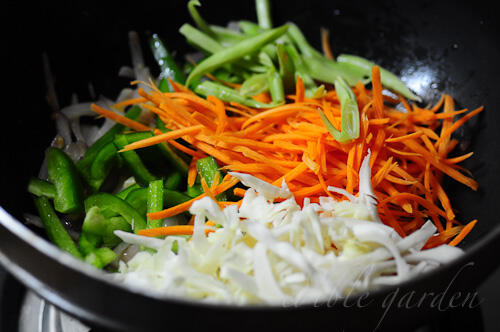But does that mean till then you end up with half baked or half cooked dishes? Not necessarily. There are really simple Indian dishes that anyone can try and make taste good with minimum effort.
Here are some quick facts about Indian Cooking.
– Indian cuisine can be broadly divided into North Indian and South Indian cooking, each distinct in flavour, spices uses, cooking style and main ingredients.
– It’s always aimed at being healthy and well-balanced. Traditionally, all ingredients were used fresh and this increased the health quotient.
– Indian cooking uses ingredients like ginger, garlic, turmeric, green chillies, etc which are said to have medicinal properties. These are crushed and added to the dishes so that the essence and flavour is imbibed into the dish in the right amount.
– Most of the cooking methods in India are such that they retain the nutrients of the fruit or vegetable. This is mostly still practised but lack of time might have made some minor changes to this today.
– The vessels used for cooking also make an impact on the final cooking. Traditionally, food was prepared in heavy bottomed iron woks (known as kadai in Hindi). In this vessel, not too much oil or water was required to bring out the flavours of the spices. Food mostly cooked in its own juices under continuous stirring.
In the coming weeks, we will see more of basic Indian cooking techniques, recipes, utensils, FAQs, etc. If you have any feedback or would like to write a guest post, do leave a comment and I will be happy to get back to you.


hey nags, this is such a co incidence. i just wrote a similar post just yesterday, talking about indian food. this is exciting. i too am doing a sereis on indian cooking. maybe we can do somthing together.
Nice to read nags….good one
thats a nice one nags..
sounds lovely Nags! people think Indian food is all about curries and cream and heavy stuff…but there’ so much more to it than what the perception is! glad you brought this up!:)
Posting everyday?? bad habit ;)…and as usual you commented while I was editing my new post..hope you noticed the awards passed on to you :)..Enjoy..hoping to see afew “varalakshmi vratham” dishes from you, soon ;)..all the best for your first ceremony too…
Prayers Blessings and Wishes..
good one nags…..it sure will b helpful….waiting for ur posts
Hey Nags –
Thanks for ur compliments on my blog 🙂
Since you have started with Indian cooking why don’t we all get-together and organize an event by making a collection of traditional Indian Recipes :
We could classify them as per region and as per what they are – Breakfast/One-dish meals?appetizers/Side-dishes/Desserts.
Let me know how this sounds.
We could work out the details.
Rgds,
Sam !
nice one will be waiting for ur post,..
its indeed a great idea to consolidate the cuisine. I am sure will benefit loads of people who are looking for ideas and inspirations. maybe you can feature histories behind familiar foods, or the different versions there are according to the region, it can get more interactive that way and you can benefit from the vast ocean of knowledge that already exist by the way of your readers and other bloggers. Like you said utensils – u know cooking in an iron wok has xy health benefits, my mum was talking about a healer she has met who said that cooking at least one dish in an iron wok on a saturday is s’posed to be spiritually healing. Likewise earthern vessels, manchatti and kalchatti all have some significance. sorry for this rather long commentary.
hi Naga. This is so cool. Indian cooking does not have any specific method or quantities to measure, isn’t it? All about improvisation and ‘throwing’ in a few powders; atleast, that’s the way I look at it. Or is that a misconception that I have? 🙂 Anyway, while North India might not ‘temper’ all dishes with mustard and curry leaves or use coconut aplenty, South India just can’t imagine having Gobi/ Aloo Parathas for breakfast through the week! Looking forward to your series. Best Wishes:-)